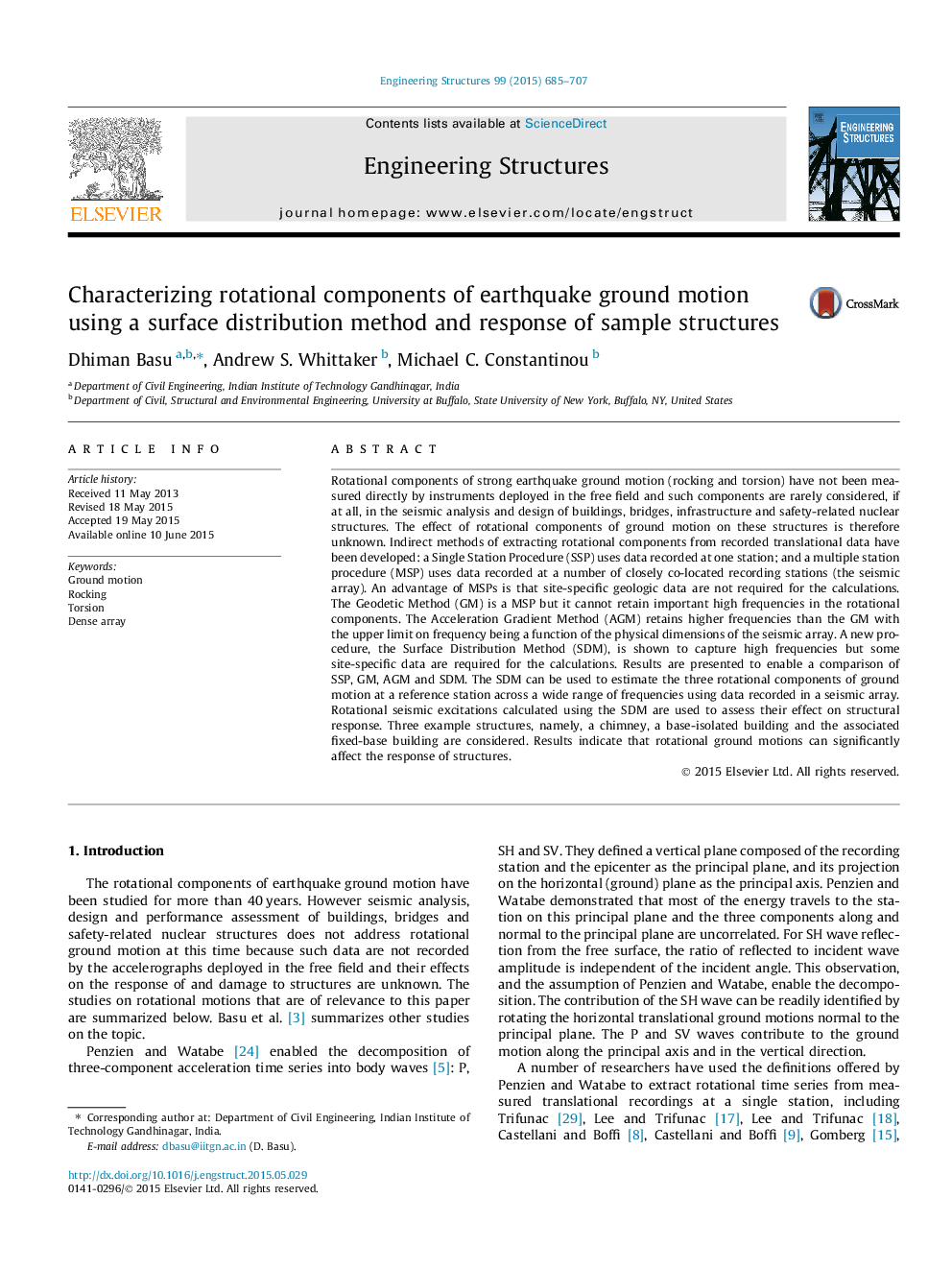| کد مقاله | کد نشریه | سال انتشار | مقاله انگلیسی | نسخه تمام متن |
|---|---|---|---|---|
| 266214 | 504345 | 2015 | 23 صفحه PDF | دانلود رایگان |
• Procedure to extract free-field rotational motions from translational dense array recordings is developed.
• High frequency content is captured provided primary contributor is one type of body or surface wave.
• Suitable for computing rotational motion from both near-fault and far-field records.
• Inclusion of rotational motion significantly affects the response of slender chimneys and near symmetric buildings.
• Rotational motion (rocking and torsion) significantly affects floor spectra in a base-isolated building.
Rotational components of strong earthquake ground motion (rocking and torsion) have not been measured directly by instruments deployed in the free field and such components are rarely considered, if at all, in the seismic analysis and design of buildings, bridges, infrastructure and safety-related nuclear structures. The effect of rotational components of ground motion on these structures is therefore unknown. Indirect methods of extracting rotational components from recorded translational data have been developed: a Single Station Procedure (SSP) uses data recorded at one station; and a multiple station procedure (MSP) uses data recorded at a number of closely co-located recording stations (the seismic array). An advantage of MSPs is that site-specific geologic data are not required for the calculations. The Geodetic Method (GM) is a MSP but it cannot retain important high frequencies in the rotational components. The Acceleration Gradient Method (AGM) retains higher frequencies than the GM with the upper limit on frequency being a function of the physical dimensions of the seismic array. A new procedure, the Surface Distribution Method (SDM), is shown to capture high frequencies but some site-specific data are required for the calculations. Results are presented to enable a comparison of SSP, GM, AGM and SDM. The SDM can be used to estimate the three rotational components of ground motion at a reference station across a wide range of frequencies using data recorded in a seismic array. Rotational seismic excitations calculated using the SDM are used to assess their effect on structural response. Three example structures, namely, a chimney, a base-isolated building and the associated fixed-base building are considered. Results indicate that rotational ground motions can significantly affect the response of structures.
Journal: Engineering Structures - Volume 99, 15 September 2015, Pages 685–707
